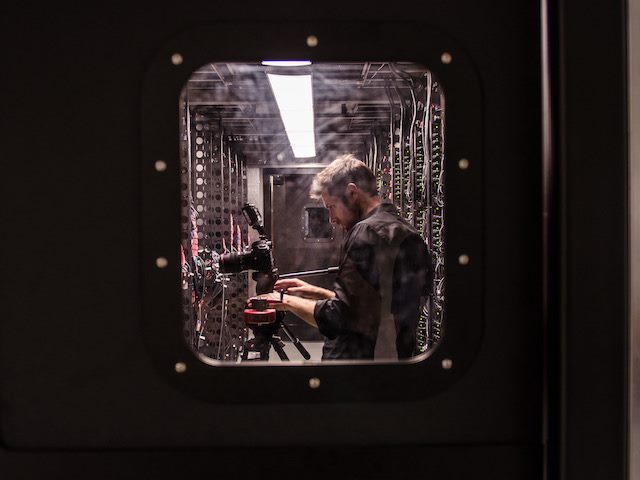

PHOTO:
jesse orrico | unsplash
Data centers are about as far away from a circular economy model of design as you can get. They are quintessential models of planned obsolescence and e-waste. And yet, every couple of months, you get a ‘The Internet, it’s not that bad, really’ or a ‘Watch as much Netflix as you want’ article. “New research by two leading scientists says some dire warnings of environmental damage from technology are overstated,” The New York Times reported in June 2021.
The researchers have quite rightly found that between 2010 and 2020, despite an explosion in data, data center electricity consumption did not rise substantially. They estimate that globally data centers are consuming about 1% of the world’s electricity.
“Shutting off your Zoom camera or throttling your Netflix service to lower-definition viewing does not yield a big saving in energy use, contrary to what some people have claimed,” is how the New York Times interprets the new research.
So, if you have an option to make an hour-length call over an old analog phone thus creating about 4 MB of data or a HD Zoom video call consuming about 1.2 GB, choose Zoom because it doesn’t really matter. Megabyte, gigabyte, zigabyte, it’s all essentially invisible, like air, inconsequential. Leave digital alone. Nothing to see here.
“Once a network is up and running, the amount of power it uses is much the same whether large amounts of data are flowing or very little,” the article states. “Once a network is up and running ….” So, once you’ve made the massive investment in the network and the data center, once you create the huge quantities of waste building these things, ‘running’ 1 GB or 10 million GB through them costs essentially the same. Which is true. However, 90% of the CO2 in a data center or network is caused by getting it up and running.
A data center is made up of three major types of material:
- Physical infrastructure
- Electrical-mechanical infrastructure
- IT infrastructure
One way data centers have become so efficient in reducing their electrical usage is by rapidly cycling through this architecture and infrastructure. If the rest of the world consumed materials like data centers do, we wouldn’t have to worry about global warming because our extractive industries would have long ago destroyed conditions for life on the planet.
The Romans built physical infrastructure that lasts to this day. Nothing in digital is built to last. A typical data center building might last 20-40 years. That CO2-intense steel, glass, cement — it’s not designed to last. CO2-intense electrical mechanical infrastructure, such as air conditioning systems, would be expected to last about 40 years in an average factory. In a typical data center it will be replaced after 15-20 years. Why? To achieve operational efficiency, data centers trash their physical materials.
Servers cause lots of CO2 during manufacture. For example, a Dell PowerEdge FC830 server is responsible about 1.7 tons of CO2 during the manufacturing process. Data centers use millions of servers. And these servers often have radically short lives. It is common practice for data centers to rip out perfectly working servers after three years or less and literally trash, shred and crush them. Why? For security reasons. Because of the cult of electrical efficiency and maximum uptime.
Gerry McGovern is the founder and CEO of Customer Carewords. He is widely regarded as the worldwide authority on increasing web satisfaction by managing customer tasks.






